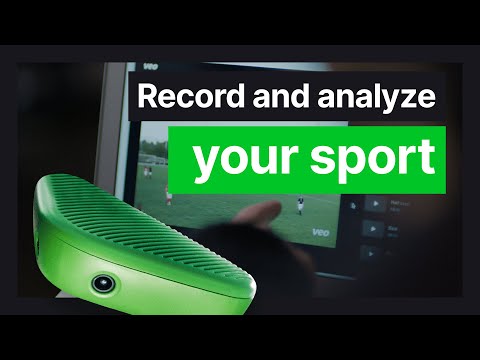AI-enabled sports cameras are revolutionizing the analysis of on field player performance. The Device Chronicle spoke to Thomas Hagen, Jens Christian Hillerup and Rasmus Røge from the engineering leadership group at Veo Technologies about their innovative product.
Veo Technologies is taking sports analysis to a different level with its camera and prediction technology for analysing and optimising in-game player training and performance. Veo allows coaches and sports teams to record and share their sports without the need for a camera operator. The company seeks to democratize the availability of broadcast and analytics and make it available to sports teams and coaches at all levels so they can improve performance and showcase player talent.

Veo technology in AI cameras
Behind the scenes of the Veo sports camera and analytics platform is an array of technology based on AI and IoT. Thomas Hagen is VP of Engineering and he oversees the development efforts in AI both in regards to the software and hardware. JC Hillerup is Head of Engine, and oversees the development of the platform for AI and OS on the Veo camera. Rasmus Røge is Head of AI and oversees the development of the machine learning models that try to find the interesting objects and actions in the scenes.
The Veo Camera was built around a Raspberry Pi Compute Module. Besides that, they use special-purpose chips to compress the two 4K video streams. Thomas explains that all of the business logic happens on the Compute Module. Nvidia technology is used on the backend video processing pipeline.
Rasmus Røge uses AI conferences such as CVPR, ICML and NeurIPS, and is inspired by the interesting papers coming out of these expert meetings to drive innovation at Veo. This incorporates object detection, multiple object tracking, video classification and action classification. Røge remarks “Challenges create new methods, you encounter a new paper that promises an approach that is 50% better, and then we will learn from and use their reasoning.”
In broad terms, the Veo technology tries to predict the interesting things in the scene. It tries to get a deep understanding of the 3D environment, go between the pixels and space to get a greater comprehension of the scene to detect the objects. The “virtual camera” is directed from end to end onto the football pitch, the video footage is analysed and understood, and then a virtual camera is optimally directed onto the scene as a human would do rather than relying on a rule-based approach.
Football coach and AI cameras
Thomas Hagen is the VP of Engineering by day. But he is also a football coach at the weekend. He finds the application to be very valuable for coaches. With the Veo Editor, the match footage is uploaded to the infrastructure, and the AI runs to catch the events and produce a follow cam.
The technology allows the coach to survey the pitch, zoom in on areas of interest to study specific aspects of the game or to help make a point to the team. Furthermore, the coach can direct small highlight videos for individual players to help them improve their training and overall performances.
Use cases
The Veo camera has many use case scenarios: the solution is used through partnerships with UK colleges where football team players can document their improvements and demonstrate their development to their coaches. In a different scenario, parents in the United States use the cameras to showcase the skills of their kids as football players on the pitch to help them get scholarships. Veo has been instrumental in helping a student get a scholarship in a high level college. Extraordinary situations such as goals from fabulous overhead kicks are now also captured through technologies like Veo.
Need for secure and robust OTA software updates
The Veo Engineering team agrees that robust and secure OTA software updates are a key enabler to AI cameras and the Veo technology platform. JC observes: “We can never get it perfect the first time so we need a secure way of pushing updates to our fleet of cameras. We have used Mender.io with zero issues, the update never breaks. It is highly stable and scalable.”
The team is also investigating how best they could integrate Mender.io to perform partial updates. This would help customers working in constrained environments to push more frequent software updates. There are also plans to integrate Mender’s feature for remote terminal access to the device assuming respect to user’s privacy. The use case is “Something looks weird on the log and we would like to investigate further.”
Developing Danish football
Veo also has an exciting collaboration with the Danish Football Federation (DBU). Thomas remarks that the Federation really understands the value of recorded sessions. Veo has made an agreement with the DBU to integrate videos into their platform so this will be a natural experience for the users of the DBU app. “You can plan the tournament, the players participating. You need to have the team defined 1 hour before the match. With the Veo recording being made by a football team, they can decide to put the match visible on the DBU platform.”
We wish Thomas, Rasmus and Jens Christian well in their journey towards enabling AI analysis of sports performance.
